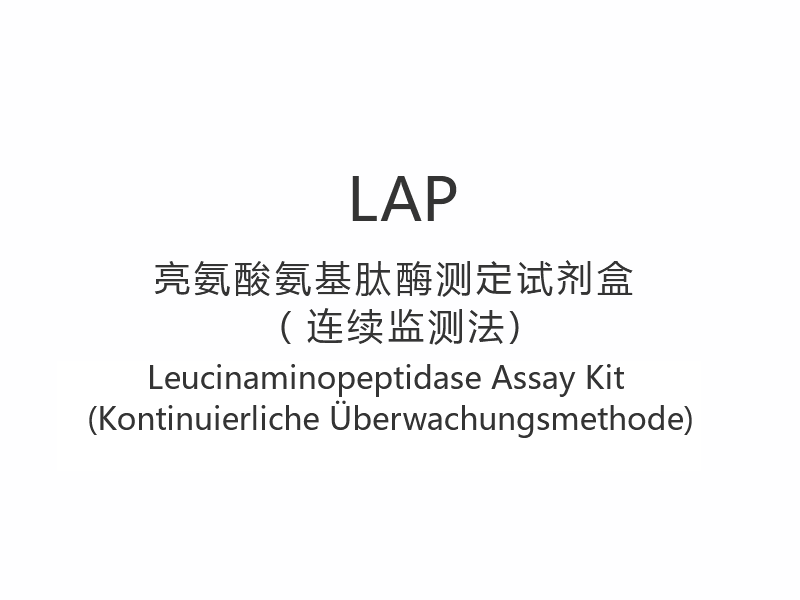Let us create a wonderful future together!
Leucine Aminopeptidase (LAMA) is a mixture of peptides and is considered as one of the most powerful natural competitive modulators available. It is capable of blocking the action of several amine oxidases, thus effectively reducing the activity level of the enzyme(s). Leucine is a well known amino acid that plays a vital role in protein synthesis. Leucine acts as an inhibitor of the cystine amine oxidase (CAAO), thereby preventing the breakdown of the nucleotides in DNA, as a complementary activity to deamination of several chemicals. Leucine has also been found out to be a powerful activator of peroxylase and is one of the precursors of the glycosylated proteins. Leucine is also found to have anti-amino acid activities and has been used as a diet supplement.

Leucine Aminopeptidase (LAMA) is an important compound for many research studies in Neurochemistry. The LAMA inhibitors have been found to be effective in neurodegenerative disorders, such as stroke, Huntington's disease, attention deficit disorder (ADD) and dementia, as they are effective in inhibiting the activity of glycosylated pathways. Leucine protects synapses from excessive stimulation, prevents the degeneration of dendrites in the brain, prevents the formation of neurotubules and prevents the accumulation of acetylcholine in neurons. Leucine is thought to improve neurotransmission, synaptic plasticity. The Leucine molecule also acts as an insulin receptor substrate and has been studied in diabetes and obesity. Leucine has also been used in the treatment of Parkinson's disease and it is believed that this amino acid may be able to reverse some of the cognitive deficiencies linked with this illness.
Leucine can be hydrolyzed by the pancreatic enzyme insulin, which leads to production of insulin. Leucine molecules then bind together with glucose. The glucose molecule then attaches itself to the Leucine receptor on the surface of the nerve cell and initiates a process called 'phosphorylation.' Phosphorylation is a complex reaction that involves the binding of glucose molecules to the Leucine receptor. This allows a greater amount of glucose to be transported to the cells and, in turn, provides the cells with energy. Leucine is the major chemical neurotransmitter in the central nervous system and is involved in processes such as learning and memory, eye movement, muscle coordination, muscle strength, immunity, blood pressure regulation and skin aging.
There are many different means for the analysis of peptides and other protein molecules with amino acid residues. One method includes the use of fluorescent probes that are sensitive to the presence of leucine aminopeptidase. The presence of this compound in the protein sample after visual inspection will indicate the degree of hydrolysis occurring. Different concentrations of leucine aminopeptidase will have different consequences. As an example, high levels of this substance will cause a much more pronounced visual effect than low levels.
The main role of Leucine aminopeptidase is to break down the double bond between two amino acids, l-glutamic acid and l-lysine. These two proteins are essential for the functioning of the muscular cells. The l-glutamic acid is important in the formation of collagen, while the l-lysine is essential for the synthesis of proteins such as the nucleic acid. When the level of these two amino acids is abnormally low, it can result in severe and sometimes life-threatening conditions.
The primary blot compound used for this analysis is the N-phenyl-taurine derivative of leucine aminopeptidase. This particular derivative binds to the membrane of the intestinal epithelial cells and releases the AMP from the binding site. The leucine AMP is then detected by the membrane's uptake capacity at a specific pH. This particular type of assay is ideal for determining the efficacy of therapeutic interventions and deciding on dosage levels.
There are a number of different methods to measure the catalytic activity of the enzyme. One of these methods involves using a substrate that is complementary to the enzyme. The presence of complementary substrate will alter the rate of which the enzyme is able to catalyze the reaction. This type of method is typically performed on non-essential blot molecules because the presence of a molecule that requires a specific energy source will reduce the overall efficacy of the molecule. Another method to measure aminopeptidase activity uses microorganisms growing in test tubes. These cells grow and divide to form a culture, and the rate of which they reproduce can then be measured.
The leucine peptides in the aminopeptidases provide the energetic mechanism by which the enzymes are able to catalyze the reaction. Amino acids are held together by a peptide bond. This is because amino acids can be either derived directly from protein or they can be derived from other chemical compounds that require an energy source to initiate their formation. A peptide bond allows one or more amino acids to act as one single piece of a molecule, resulting in a much higher rate of molecular movement than would be possible if the chemical components were separated. The leucine aminopeptidases are thus used to provide a wide range of diagnostic and therapeutic tests.
Original products at https://www.zjkangte.com/product/liver-function/lap-leucine-aminopeptidase-assay-kit-continuous-monitoring-method.html



